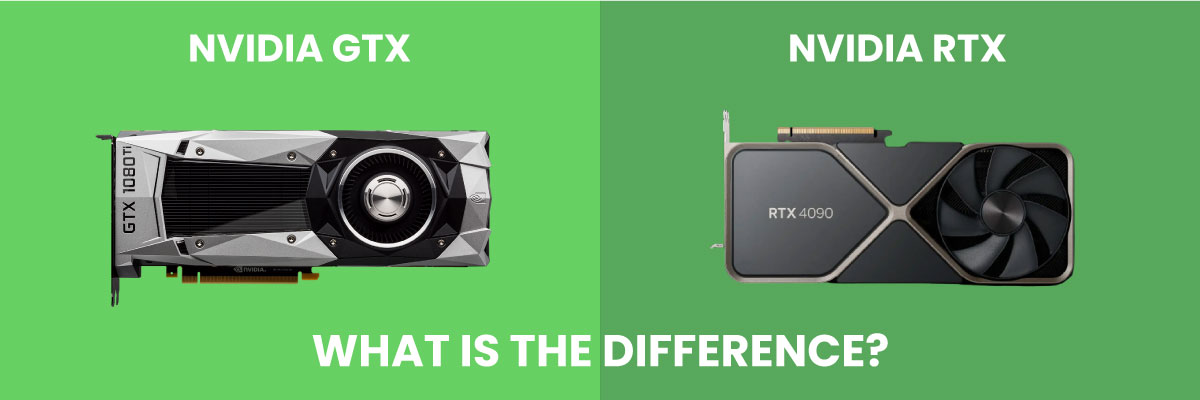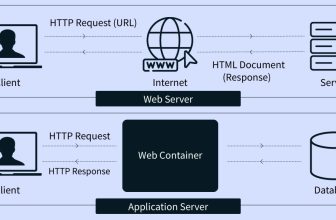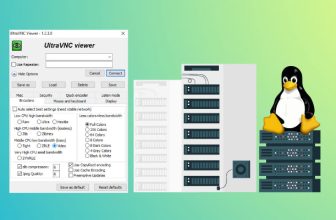GTX vs RTX : A Complete Features Comparison

Introduction to GTX and RTX
Welcome to the GTX vs RTX beginner’s guide where we’ll discuss the standout features of both the graphics cards and how different they are, in the GTX versus RTX debate.
NVIDIA created the GeForce brand of GPUs, which includes its two major versions, GTX or RTX. which are made specifically for graphically-demanding programs.
GTX, or Giga Texel Shader eXtreme, is a line of dedicated GPUs that was created specifically for gaming on laptops and desktop computers. RTX, or Ray Tracing Texel eXtreme, is a current gaming graphics card that was specifically designed with significantly upgraded technologies for enhanced experiences, which increased the visual appeal of the video.
GTX vs RTX: Comparison of Features
GTX (Giga Texel Shader Extreme)
Adaptive Shading Technology
New adaptive shading technology supported by GTX can slightly alter the shading rate for certain areas of a scene or event for particular objects.
Higher Frame Rates
Higher frame rates from a GTX graphics card allow you to see things earlier and increase your possibility of shooting back.
Game Ready Drivers
Drivers that provide you with the most recent GTX NVIDIA technology and enable you to optimize game settings with a single click.
NVIDIA Ansel
You can take high-quality pictures of your games using the GTX GPUs’ support for NVIDIA Ansel, which lets you snap in-game pictures and view them in 360 degrees.
Directx 12
Advanced DirectX 12 features offered by GTX graphics cards let game developers create stunning and amazingly realistic graphical effects.
NVIDIA G-SYNC
It has the best NVIDIA G-SYNC processors to provide the smoothest possible gaming experience without input lag, tearing or stuttering.
Max-Q Design
In order to execute demanding graphics workloads, NVIDIA Max-Q graphics cards are designed to improve efficiency and cooling systems.
Virtual Reality
Some of the most immersive PC gaming experiences are provided by the next-generation VR performance supported by the GTX graphics card.
RTX (Ray Tracing Texel Extreme)
Architecture
The second-generation RTX graphics cards from NVIDIA are built on the Ampere architecture, which gives them significant performance and capability improvement.
Performance
Playing ray-traced games is made possible by the NVIDIA RTX platform, which combines unmatched performance and memory capacity to produce realistic graphics.
Ray Tracing
The most powerful ray tracing platform, NVIDIA RTX, is utilized to improve lighting in video games in a variety of ways.
DLSS
All RTX GPUs support DLSS, a real-time deep learning picture improvement that produces better resolution output frames from lower resolution input.
Reflex
NVIDIA Reflex is a technology that keeps track of your computer or gaming display to minimize latency and offer the best responsiveness for the ultimate competitive advantage.
Game Ready Drivers
The newest “Game Ready” driver mostly refers to game accelerators that offer new features, address problems, and enhance gaming performance.
NVIDIA G-SYNC
By synchronizing display refresh rates, removing screen tearing, and reducing input lag and display stutter, NVIDIA G-SYNC is a revolutionary display technology that offers the fastest and smoothest gaming experience ever.
DirectX 12 Ultimate
With support for ray tracing, variable rate shading, mesh shaders, and sampler feedback, DirectX 12 Ultimate elevates gaming realism to a whole new level.
GeForce Experience
Take screenshots, record live streams, and share them with your friends. Optimize your game settings and keep your drivers current. GeForce Experience has every feature.
NVIDIA Ansel
With Ansel RTX, you can add stackable effects, save in HDR format, and take pictures with up to 8K quality in hundreds of games.
Virtual Reality
It provides you with the performance you require with efficient display resolutions, minimal refresh rates, and extremely tight latency tolerances. Additionally, they feature cutting-edge, immersive technology that is simply mind-blowing.
Resizable BAR
The first PCI Express resizeable BAR-enabled RTX NVIDIA graphics card will enable direct access to full visual memory without the need for an I/O buffer.
By now, you know about the main features of the GTX or RTX, as stated above.
When Buying a Graphics Card, What Things Should One Keep in Mind?
An ideal graphics card comparison shouldn’t be difficult if you have a plan in place for dealing with each of the things mentioned below.
Performance
If you want the best performance from your graphics card, you’ll have to invest a lot of money in the most expensive cards.
Specification
What matters is deciding what you want to do and then determining which specifications will allow you to do it.
Priority
How much memory your graphics card has access to is one of the most crucial factors to take into account.
Compatibility
You’ll also need to determine any potential compatibility that any graphics card may have.
Which is the Better One, GTX or RTX?
Are you still confused about which one you should purchase? Let’s understand
Performance
While GTX performs better for common graphics jobs like photo editing and 3D modeling, RTX is superior for virtual reality applications and gaming.
Price
Due to RTX’s significantly higher utilization and power draw, GTX cards are sometimes far more affordable than RTX cards.
Availability
NVIDIA’s GTX GPU series dates back a while. Although they don’t perform poorly, they fall short of the improved and more readily available RTX series.
There are some fundamental differences between the GTX versus RTX cards, but both support the DXR extension in DirectX12 from Microsoft as well as DLSS.
Conclusion
Everything we should discuss in the comparison of GTX vs RTX has been covered here. It will give you a better idea now and will be helpful to decide which one would be more appropriate for your needs. If you have any questions, please leave a comment below.







